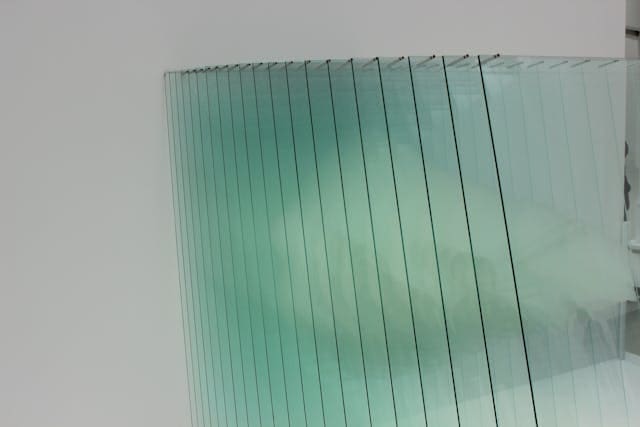The commercial glass industry has grown a lot, becoming an important part of modern architecture. As buildings become more innovative, the role of glass extends beyond simple transparency. From safety to energy efficiency, various commercial glass types cater to specific architectural needs, directly impacting comfort and performance. Understanding the different options available is not just about aesthetics; it involves considering safety standards, energy regulations, and environmental impact. As sustainable design becomes a priority, the glass type selected can greatly influence a building’s effectiveness and appeal.
Architects are increasingly exploring commercial glass not just as a material but as a medium to convey a message. The ability to manipulate light, reflect surroundings, and create ambient spaces alters how occupants experience their environment. Thoughtfully chosen elements create a tangible connection between people and their spaces. Glass moves beyond being a passive element, becoming an active participant in the architectural narrative.
Tempered Glass: Strength and Safety
Tempered glass goes through a process involving extreme heating followed by rapid cooling. This method increases its strength, making it more durable than regular glass. The extra resilience allows tempered glass to resist impact and thermal stress effectively. A primary benefit lies in safety; when shattered, tempered glass breaks into small, blunt pieces, reducing the risk of injury compared to traditional glass, which can form sharp shards. The safety features of tempered glass contribute to making buildings safer for occupants and pedestrians alike.
Applications of tempered glass span various architectural contexts. Its use in entrances and façades provides not only aesthetic appeal but also essential structural integrity. Many commercial buildings feature tempered glass for partition walls, allowing natural light to flood spaces while maintaining necessary boundaries. The thermal stability and strength of tempered glass support the demands of modern architecture, enabling designers to implement expansive glass features with confidence.
Laminated Commercial Glass: Stability and Noise Reduction
Laminated glass comprises multiple layers of glass bonded by a transparent interlayer. This arrangement improves strength and durability, making it more resilient against impacts and deformation. Unlike standard glass, laminated versions don’t shatter explosively upon impact. Instead, the interlayer holds the pieces together, minimizing the risk of injury. This feature proves particularly advantageous in environments that prioritize safety, such as schools, healthcare buildings, and corporate offices.
Sound insulation is another notable characteristic of laminated glass. The interlayer effectively dampens noise, creating quieter environments, especially nice for office spaces or educational institutions. In noisy urban areas, laminated glass can improve comfort by reducing external sounds, promoting a more productive atmosphere.
Low-E Glass: Energy Efficiency
Low-emissivity (Low-E) glass features a specialized coating that performs a dual function: reflecting heat and allowing light to pass through. This balance contributes to overall energy efficiency, where buildings capitalize on natural light while minimizing unwanted heat loss or gain. The coating’s properties lessen the amount of infrared radiation entering a space without sacrificing visible light, creating a more comfortable environment for occupants.
In climates with extreme temperatures, the benefits of Low-E glass become even more pronounced, as it helps to maintain consistent indoor conditions, no matter the external weather. Energy costs are also lower when using Low-E glass, due to reduced reliance on heating and cooling systems. By maintaining steady indoor temperatures, buildings not only reduce energy consumption but also lessen their carbon footprint.
Insulated Commercial Glass: Comfort and Temperature Control
Insulated glass units (IGUs) consist of two or more glass panes separated by a space filled with air or gas. This design improves thermal insulation, creating a barrier that effectively keeps indoor temperatures stable. By minimizing heat transfer, insulated glass contributes to creating comfortable environments within commercial buildings. It allows for controlled climate management regardless of outdoor conditions, allowing occupants to enjoy consistent temperatures all year round.
The impact of insulated glass on energy efficiency is noteworthy. By reducing reliance on heating and cooling systems, significant energy savings can be achieved. Buildings utilizing insulated glass consume less energy, contributing to a lower carbon footprint. This efficiency aligns with modern sustainability goals and creates spaces that prioritize occupant comfort.
Fritted Glass: Aesthetic Versatility and Solar Control
Fritted glass features a ceramic coating, applied to its surface, offering a blend of beauty and practicality. This coating, often customizable, enables architects to experiment with colors and patterns, making fritted glass an exciting tool in commercial design. Beyond aesthetics, it serves functional purposes, including glare reduction and UV protection. These characteristics enhance the comfort of occupants while mitigating potential damage to interior furnishings from harmful sun exposure.
Fritted glass reflects sunlight, which can significantly lower glare in brightly lit spaces, creating a more pleasant and productive environment. Incorporating fritted glass aligns with sustainable building practices. Its ability to control heat and light minimizes energy consumption, offering buildings enhanced thermal efficiency. The adaptability of fritted glass extends to various architectural elements, such as façades, skylights, and shading devices.
Choosing the right type of commercial glass impacts modern architectural design considerably. Each type presents unique benefits that enhance safety, energy efficiency, comfort, and aesthetics. Knowledge of these materials equips architects and builders to create functional spaces that are visually compelling and sustainable. Awareness of how various glass types contribute to a building’s overall performance promotes informed design choices. This understanding opens up possibilities for innovative architectural solutions, guaranteeing that spaces are both practical for occupants and harmonious with their environments.
The New Jersey Digest is a new jersey magazine that has chronicled daily life in the Garden State for over 10 years.
- Staffhttps://thedigestonline.com/author/thedigeststaff/
- Staffhttps://thedigestonline.com/author/thedigeststaff/
- Staffhttps://thedigestonline.com/author/thedigeststaff/
- Staffhttps://thedigestonline.com/author/thedigeststaff/


